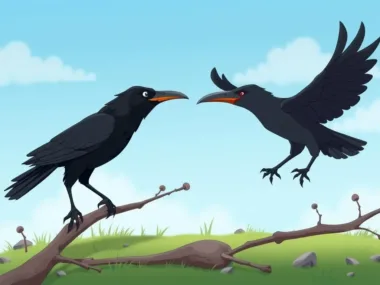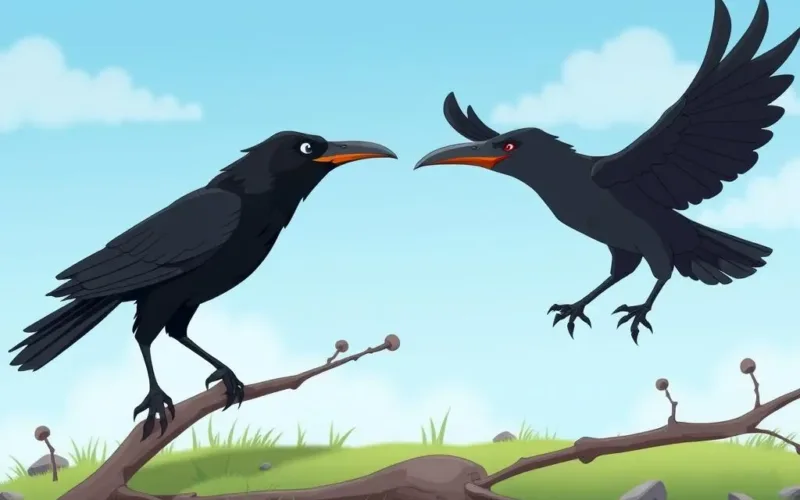Discover the fascinating differences between jaguars vs leopards in this comprehensive guide. From their physical traits to hunting styles, habitats, and conservation challenges, explore what makes these two spotted giants unique in the animal kingdom.
Jaguar vs Leopard: Unraveling the Secrets of Two Spotted Giants
Jaguars and leopards—two of nature’s most stunning big cats—often leave people marveling at their spotted coats and fierce grace. While they share a family tree as members of the Panthera genus, these majestic predators are far from identical twins. From their muscular builds to their hunting styles, jaguars vs leopards have carved out unique identities in the wild. Join us as we dive into the differences that define these feline wonders, from the rainforests of South America to the savannas of Africa and beyond.
Why the Mix-Up?
At a glance, jaguars vs leopards seem like siblings separated at birth. Their golden coats adorned with rosettes invite confusion, and their stealthy prowess only adds to the mystery. Yet, these similarities mask a world of differences shaped by geography, evolution, and survival. Let’s peel back the layers and explore what makes each cat a standout in its own right.
Physical Traits: Power Meets Precision
Size and Structure
Jaguars are the brawny heavyweights of the duo. With a stocky, muscular frame, they can tip the scales at up to 250 pounds, outmuscling their leopard cousins, who typically weigh between 80 and 175 pounds. Jaguars boast a broad, powerful head and a shorter tail, built for brute strength. Leopards, by contrast, are leaner and more lithe, with an elongated skull and a body designed for agility over raw power.
Spots That Tell a Story
Both cats wear rosettes like badges of honor, but the patterns reveal their individuality. Jaguar rosettes are bold and large, often featuring a central spot that adds depth to their coat. Leopards sport smaller, tighter rosettes without that central dot, giving their fur a more delicate, intricate look. Whether in their classic golden hues or rare melanistic “black panther” forms, these coat patterns are a key clue to telling them apart.
Where They Rule: Habitats Across Continents
- Jaguars: These cats reign over the Americas, roaming from the southwestern United States to the heart of Argentina. The Amazon rainforest is their stronghold, but they’re just as comfortable in swamps, grasslands, and near rivers—thanks to their love of water.
- Leopards: Leopards claim a broader kingdom, stretching across Africa, the Middle East, and Asia. From the rugged mountains of Russia to the dense jungles of India, their adaptability lets them thrive in a stunning array of landscapes, even near human settlements.
Hunting Prowess: Brute Force vs. Feline Finesse
Jaguars: Lords of the Ambush
Jaguars wield a jaw-dropping bite force, strong enough to crunch through skulls and shells. They’re ambush experts, lying in wait before unleashing a devastating strike. Unlike most cats, they’re at home in water, swimming with ease to hunt caimans, fish, and other aquatic prey—a rare talent among felines.
Leopards: Masters of the Heights
Leopards take stealth to new heights—literally. With unmatched climbing skills, they haul their kills into trees, safeguarding their meals from rivals like lions or hyenas. Their hunting style is all about precision and patience, stalking a wide range of prey with silent grace.
What’s for Dinner? Diets by Region
- Jaguars: In their American domains, jaguars feast on hefty catches like deer, tapirs, and peccaries. Their water-loving nature adds caimans and turtles to the menu, showcasing their diverse palate.
- Leopards: Leopards adapt their diet to their surroundings. In Africa, they target antelopes and warthogs; in Asia, they might snag deer or wild boar. Smaller fare like birds and rodents keeps them fed in lean times, proving their resourcefulness.
Conservation Challenges: A Fight for Survival
- Jaguars: Labeled Near Threatened by the IUCN, jaguars face shrinking habitats due to deforestation and clashes with humans over livestock. Conservationists work tirelessly to protect their territories and curb poaching.
- Leopards: Classified as Vulnerable, leopards battle habitat loss and retaliation killings across their vast range. Efforts to preserve their ecosystems and foster coexistence with people are critical to their future.
Legends and Lore: Cultural Icons
- Jaguars: In the Americas, jaguars are sacred to many indigenous peoples, embodying strength and mysticism. They stride through myths as gods and guardians, their image etched in ancient art.
- Leopards: Across Africa and Asia, leopards symbolize cunning and elegance. Their pelts once adorned royalty, and their mystique endures in folklore as emblems of the wild’s untamed spirit.
Guardians of the Wild: Ecosystem Impact
Both cats sit atop their food chains, shaping their worlds as apex predators. Jaguars keep herbivore numbers in check, preserving forest vitality in the Americas. Leopards maintain balance across their diverse habitats, ensuring no single species overwhelms the rest. Their presence is a lifeline for biodiversity.
Final Roar: Two Cats, Two Legacies
Jaguars vs leopards may share a spotted legacy, but their stories diverge in thrilling ways. The jaguar, a powerhouse of the Americas, commands respect with its strength and aquatic flair. The leopard, a versatile survivor, enchants with its agility and global reach. Together, they remind us of nature’s endless creativity—and the urgent need to protect these irreplaceable icons of the wild.














Leave a Reply